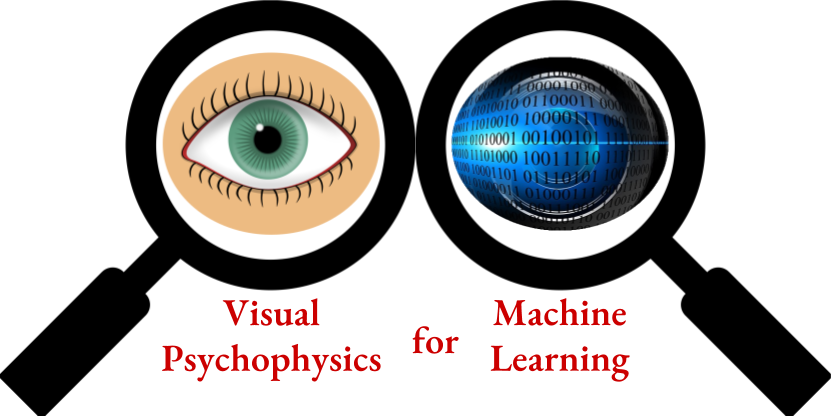Visual Psychophysics for Machine Learning

When an autonomous vehicle makes a lethal mistake, one should question the degree of trust we place in such decision making systems. Machine learning systems such as this have largely risen from the wave of remarkable machine learning advancements made possible by the substantial increase in data and compute power. While these breakthroughs have led to a multitude of applications that positively impact lives, one should not forgo thorough assessment prior to conceding complete trust in them. In Visual Psychophysics for Machine Learning, we attempt to bridge the gap between Machine Learning theory and its application by using Visual Psychophysics, a technique developed and employed by vision scientists for over a century. By studying Machine Learning as a Psychologist would study biological vision, we can develop Machine Learning models that more closely mimic the robustness of its biological counterpart.
Brandon RichardWebster, Walter Scheirer
Collaborators: So Yon Kwon, Christopher Clarizio
Visual Psychophysics for Making Face Recognition Algorithms More Explainable, Brandon RichardWebster, So Yon Kwon, Christopher Clarizio, Samuel E. Anthony, Walter J. Scheirer, to appear at the European Conference on Computer Vision (ECCV), Sept 2018, Munich, Germany: [pdf] [arxiv] [supp. material]
PsyPhy: A Psychophysics Driven Evaluation Framework for Visual Recognition, Brandon RichardWebster, Samuel E. Anthony, Walter J. Scheirer, IEEE Journal of Transactions on Pattern Analysis and Machine Intelligence, June 2018: [pdf] [arxiv] [supp. material]
